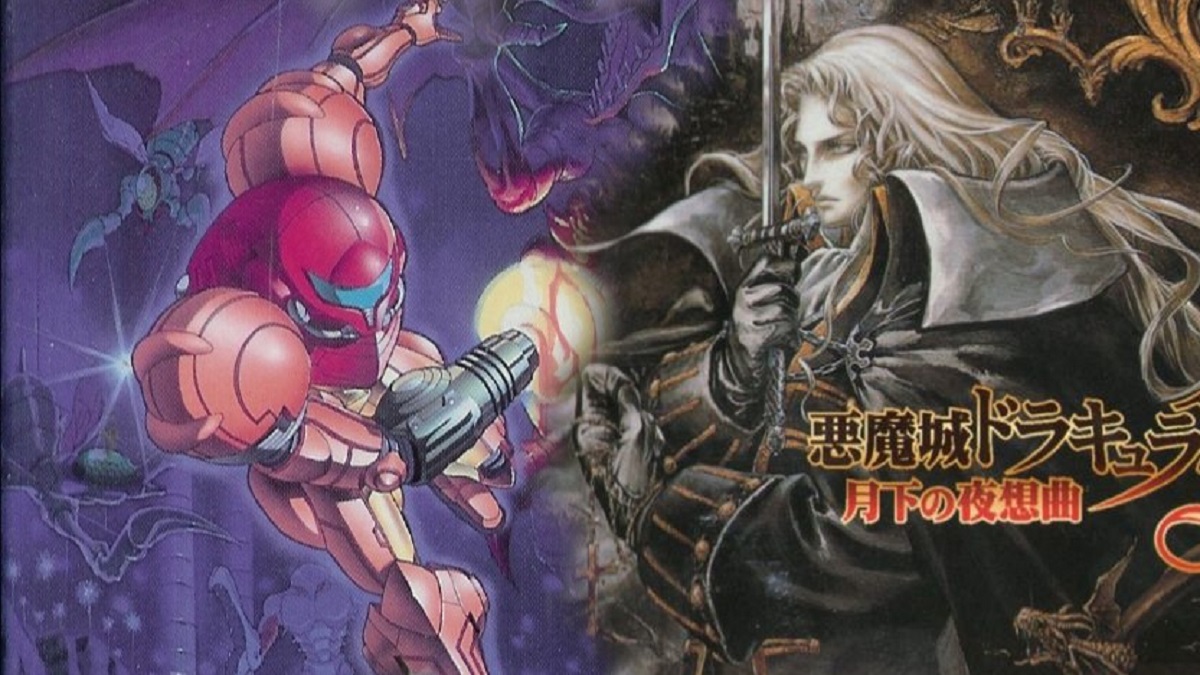One of the most common genres of platformer today is Metroidvania. I’ll get to why it’s favored, but first, we need to establish what this sub-genre actually is. It’s a somewhat simple question with an annoying twist.
Metroidvania is a name for a nonlinear game with gated exploration. Nonlinear just means that you’re not forced in a single direction. You can go forward, backward, and anywhere not blocked off by an obstacle. The gated exploration part means that there are areas where you can not proceed until you have an item. This can be a key, but commonly, in Metroidvania, it’s an ability that enables you to overcome an obstacle.
The name is a portmanteau of the names of two games: 1986’s Metroid, and 1986’s Castlevania. More specifically, the “Vania” part of the name originates from 1997’s Castlevania: Symphony of the Night. Both of these games are nonlinear, gated exploration games that were influential on the genre.

Why the word kind of sucks
The Metroid part of the name is somewhat suitable, as the original Metroid established a lot of the standards and conventions of the nonlinear, gated exploration genre. Why we culturally decided that Castlevania should get in on the action, I’ll never know. It makes it sound like there was nothing between Metroid and Castlevania: Symphony of the Night, and that’s just hogwash.
Following Metroid, there was a boom in gated exploration games. Rygar, Strider, then, of course, Super Metroid. The first Castlevania was a linear platformer, while 1987’s Castlevania II was more of a gated exploration game, but afterward, the series returned to its linear roots. Technically, the Zelda games belong to the Metroidvania subgenre, but they have a number of other standards that keep them outside of that classification. Some still consider it part of the subgenre, while others even think that “Zeldatroid” would be a more accurate nomenclature. I agree it would be more accurate, but I also think that’s an awful word.
It’s just a very inelegant word that I feel should have fizzled out along with “Doom-Clone,” which was how the FPS genre was first referred to. Some will tell you that a true Metroidvania game requires RPG stats alongside the gated exploration, but I feel like we’re long past that. Even if we could somehow reclassify a number of classic titles, that requirement would put Metroid outside the Metroidvania subgenre.

Why is it popular?
There are a lot of reasons why the Metroidvania sub-genre endures. One of the reasons that Castlevania: Symphony of the Night adopted it was because it was less punishing for new players. Regardless of whether or not you’ve played a previous Castlevania title, you could get into it. With that in mind, there are definitely difficult Metroidvanias out there. But typically, they aren’t geared toward it and are often forgiving of mistakes.
More likely, however, Metroidvania is so appreciated in modern sidescrollers because it’s easier to tell a story within them. With a typical level-based platformer, you’re restricted to telling most of the story as bookends to the levels. An interconnected level means you can interrupt the player whenever you want and guide them through chokepoints to ensure they don’t miss important details. Likewise, it’s easier to build tension during a climax, whereas, in most linear sidescrollers, you just have one extra-hard level at the end.
Metroidvania does have its shortcomings, especially when it comes to pacing and challenge. However, as with any genre, a bit of creativity goes a long way. Whether or not the nomenclature of the subgenre is accurate is up for debate, but you can’t deny the effectiveness of the established standards and their longevity.


